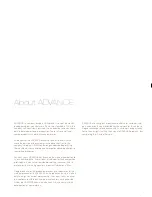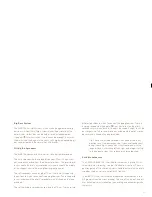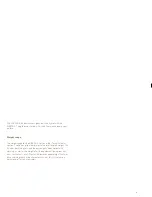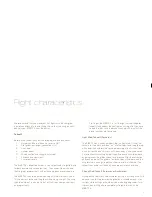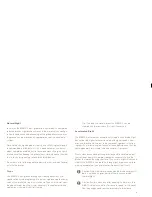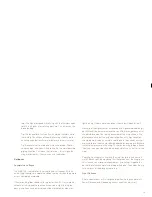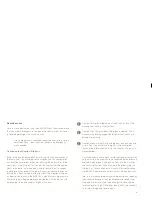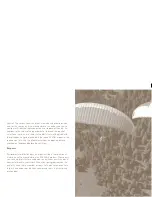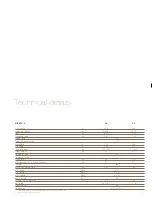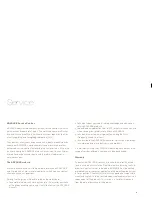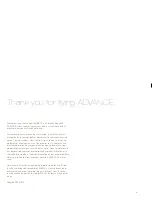
51
Spiral dive
We recommend a neutral sitting position without intentional weight
shift for the most comfortable performance of this manoeuvre.
Enter the spiral with a progressive increase of brake application.
Head and vision should be directed in the direction of turn. As the
bank increases so does the rotation rate and the centrifugal force.
Basically the behaviour of the glider can be divided into two phases:
in the first the glider increases its angle of bank and turns in ever-de-
creasing circles. At the second phase the glider bites into the spiral:
this means that the wing dives forward relative to the pilot and ap-
pears to be aligned with the horizon – the airspeed, g and rate of ro-
tation increase markedly. During the spiral try to maintain the neutral
sitting position and don’t fight the centrifugal force – your body will be
pulled outwards.
Recovery requires a progressive releasing of the brake on the inside
of the turn. From a spiral dive with high sink and rotation rates it is es-
sential to carefully apply some inside brake again while recovery is ta-
king place, in order to slow down the natural recovery behaviour and
subsequent high energy climb. This is the only way to avoid an ex-
cessive pitch up attitude and consequent surge. Make sure you reco-
ver with enough height above the ground. Generally one should ex-
pect the recovery to take the same amount of time as the entry, but
the rate of descent during recovery will be higher!
The BIBETA 4 comes out of the spiral by itself if a neutral sitting po-
sition is maintained. Active weight shift to the inside of the turn can
lead to greater acceleration and a delayed natural recovery.
Caution: The BIBETA 4 is certified for harnesses of group GH
(without rigid cross-bracing). GX harnesses (with cross-bra-
cing) or those with very low hang points could drastically alter
the flight characteristics in the spiral dive. (see chapter «Sui
table
harnesses»).
Caution: do not fly spiral dives with big ears; the raised wing
loading on a reduced wing area together with the reduction
of effective lines can seriously overstress and damage your
glider.
Caution: To avoid a collapse enter the spiral carefully when in
accelerated flight, because the angle of attack is reduced.
Caution: Remember that you, the pilot, may be familiar
with the high g-loading in a spiral dive, but it might upset your
passenger a lot. If a descent is required for passenger well-
Summary of Contents for Bi Beta 4
Page 1: ...1 BIBETA4 Betriebshandbuch User manual Manuel d utilisation...
Page 2: ......
Page 3: ...Deutsch Seite 5 32 English Page 35 61 Fran ais Page 63 90...
Page 4: ...4...
Page 33: ...33...
Page 34: ...34...
Page 62: ...62...
Page 91: ...91...
Page 100: ...100...
Page 105: ...ADVANCE Thun AG Seestrasse 14 CH 3602 Thun...
Page 107: ......

